1
At the dawn of the twentieth century settlement of the Prairies and Western Canada was expanding rapidly. The Federal Government saw the need for another National Transcontinental Railway to encourage more settlement and to satisfy the needs of this new group of people who were growing strong politically. The Canadian Northern Railway began construction of the western part of a second National Transcontinental railway and soon the cries of "me too" by politicians and the electorate, plus the promise of subsidies, had the Grand Trunk Railway constructing the third National Transcontinental line. The western part of this line was known as Grand Trunk Pacific, while the eastern part was known as the National Transcontinental Railway. Patronage and waste caused the cost to build the National Transcontinental railway to balloon into the hundreds of millions. The cost of these two transcontinental railways which often went through desolate unpopulated places in the west, while at the same time in some areas two or more of the lines were competing for the same small amount of rail traffic, meant these railways soon were teetering on the edge of bankruptcy. In fact, the Federal Government almost went bankrupt because of the hundreds of millions in subsidies given for construction of the railways.Political pressure from New Brunswick ensured that it too would get its slice of the pie. In 1903 the Subsidies Bill for the Grand Trunk Railway presented to Parliament included money to build the National Transcontinental Railway from Winnipeg to Moncton. The line which offered a direct route through the Province from Moncton to Edmundston was well built and cost less per mile to build than the Intercolonial Railway line. However, while the line provided a straight and fast route to ship goods from Central Canada to the Maritimes it passed through sparsely populated areas of the Province with little commercial activity. The line also wasted money by building unnecessary track through sections of the province which already had lines rather than obtaining running rights for those lines. In Northwestern New Brunswick the National Transcontinental Railway lines ran parallel to the Canadian Pacific lines near Edmundston and also ran near to the Temisouata Railway lines. Once again there were too many rail lines chasing too little business. The Grand Trunk never operated the National Transcontinental Railway line in New Brunswick. The Intercolonial Railway and various contractors operated the New Brunswick portion of the line from its opening in 1912 until 1915 when the line became part of the Canadian Government Railways. In 1917 the National Transcontinental Railway operated by the Canadian Northern Railways went bankrupt and was merged with the Canadian Government Railways to form the Canadian National Railways. In 1920 the government forced the Grand Trunk Railways to become part of the Canadian National Railways. During the next decade Canadian National took over operation of all the branch lines in the Province not controlled by Canadian Pacific. Most of these lines were struggling financially, but political pressure demanded that they continue to operate. All of the lines were seen by local citizens as a key to the economic growth of their communities and many of these lines passed through areas inaccessible by roads during the winter. These factors combined with the economic downturn caused by the Great Depression meant that governments would not permit abandonment of the lines. In addition to the branch lines already taken over by the Canadian Government Railways, Canadian National took over control of: the Caraquet and Gulf Shore Railway, the Kent Northern Railway, the Saint John and Quebec Railway and the Temiscouata Railway. Canadian National also built spur lines to Brunswick Mines and Heath Steel. Like Canadian Pacific, Canadian National suffered greatly from the loss of business to the trucking industry in the Province particularly along its branch lines. In the 1960's Canadian National began abandoning these smaller branch lines and by 1995 the only lines still operating included: the line from Saint John to Moncton, the old National Transcontinental Railway line used by Canadian National to haul freight, and the old Intercolonial Railway route used by VIA for passenger service. During the 1990's, the two National Railways decided to cut back on rail mileage in New Brunswick and other parts of Canada, so many branch lines nation wide were abandoned. Other still profitable lines which did not fit into the new National Criteria for the two National Railways were sold to various short line companies. One of the lines that was sold to a short line company was the old Intercolonial Railway line from Pacific Jct. to the Quebec border which is now owned by the New Brunswick East Coast Railway, although VIA trains still travel along this route.
2
National Transcontinental Railway line20th Century
New Brunswick, Canada
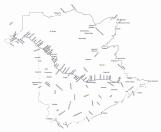 Credits:
Credits:New Brunswick Railway Museum
3
Moncton CNR Shops20th Century, Circa 1935
Moncton, New Brunswick, Canada
 Credits:
Credits:New Brunswick Railway Museum
4
Moncton CNR Shops20th Century, Circa 1960
Moncton, New Brunswick, Canada
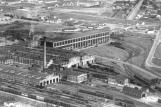 Credits:
Credits:New Brunswick Railway Museum
5
Construction of the NTR in New Brunswick20th Century, Circa 1912
New Brunswick, Canada
 Credits:
Credits:New Brunswick Railway Museum
6
Edmundston NTR Roundhouse20th Century, Circa 1912
Edmundston, New Brunswick, Canada
 Credits:
Credits:New Brunswick Railway Museum
7
Edmundston NTR Station20th Century, Circa 1912
Edmundston, New Brunswick, Canada
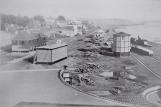 Credits:
Credits:New Brunswick Railway Museum
8
Moncton Hump Yard20th Century, Circa 1960
Moncton, New Brunswick, Canada
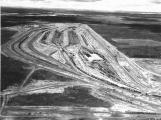 Credits:
Credits:New Brunswick Railway Museum
9
Moncton Yard20th Century, Circa 1930
Moncton, New Brunswick, Canada
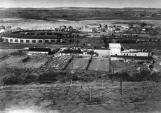 Credits:
Credits:New Brunswick Railway Museum
10
St. Leonard CNR Station20th Century, Circa 1957
St. Leonard, New Brunswick, Canada
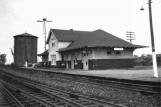 Credits:
Credits:New Brunswick Railway Museum
